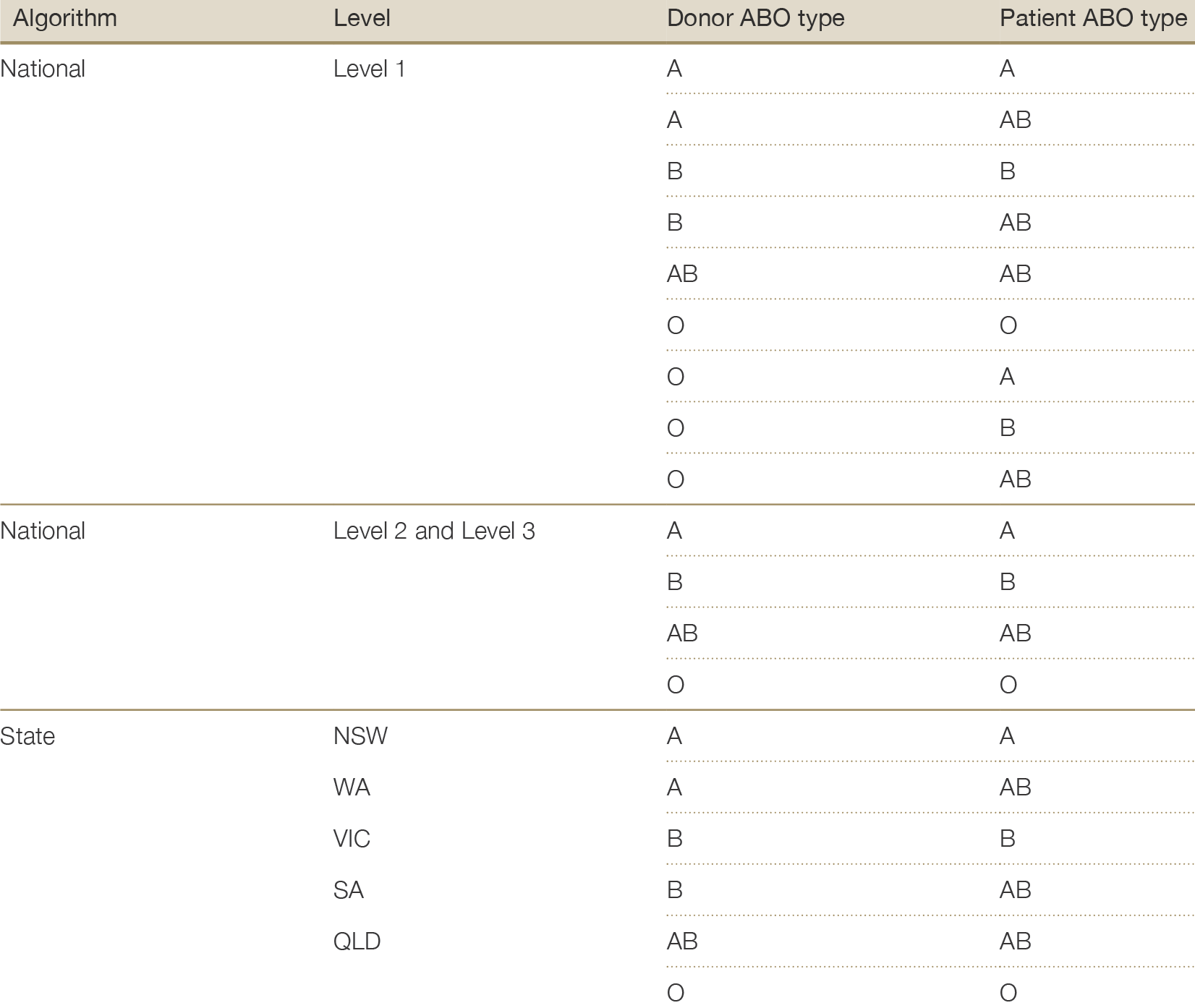Appendix C
Kidney allocation algorithms
National Allocation formula
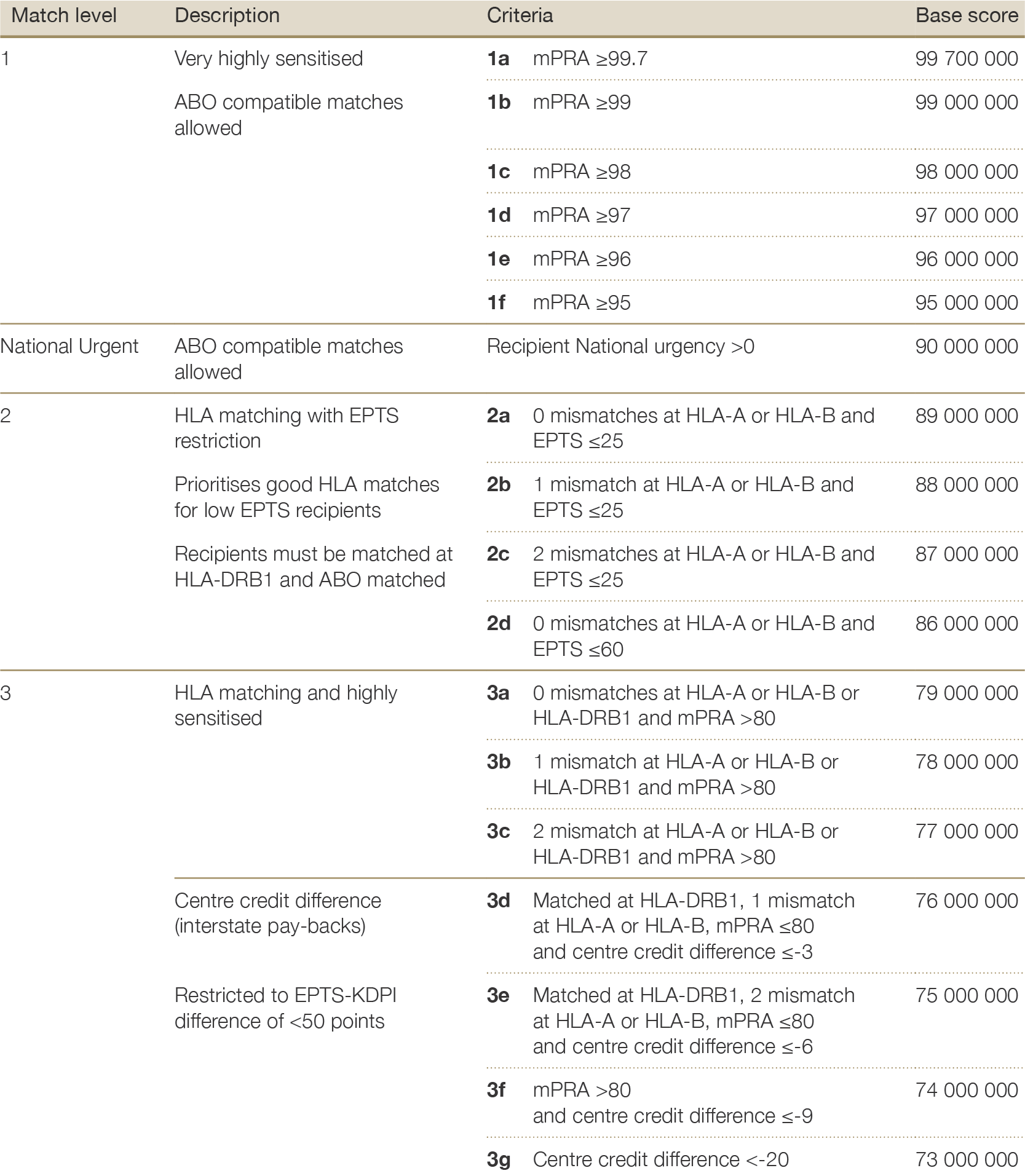
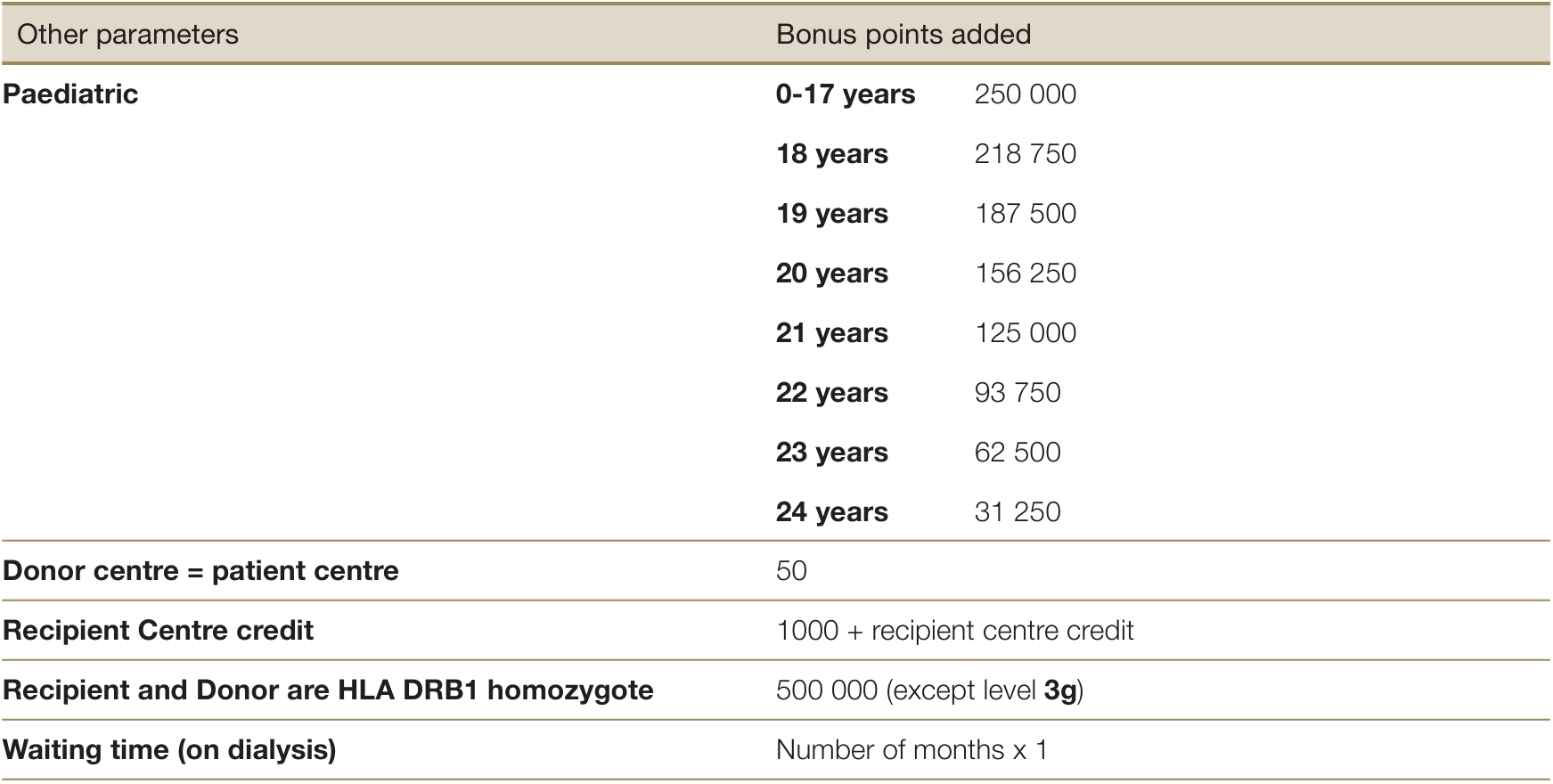
State Allocation
Allocation initially matched with a restriction applied (EPTS-KDPI difference ≤50), then unrestricted matching is applied.
If a KDPI max is specified in OrganMatch, it will be applied to all Levels of State Allocation.
A maximum KDPI value of 20 is applied to kidneys retrieved from donors <18 years.
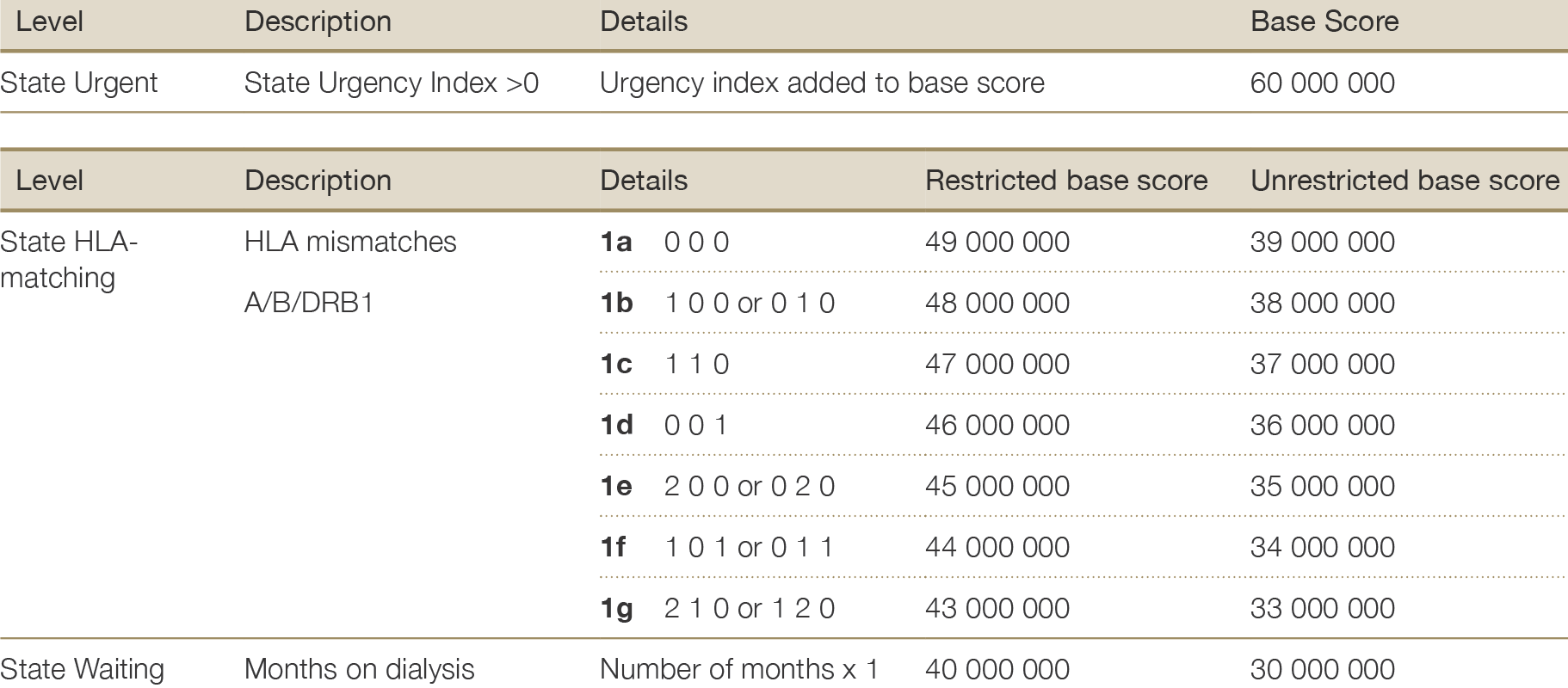
Additional bonuses applied at the State Level:
Paediatric bonus of 10 000 000 for restricted algorithms – state HLA-matching. With age tapering scores as follows:
Points = 10,000,000 – ((10,000,000/ (25-17)) *(age – 17)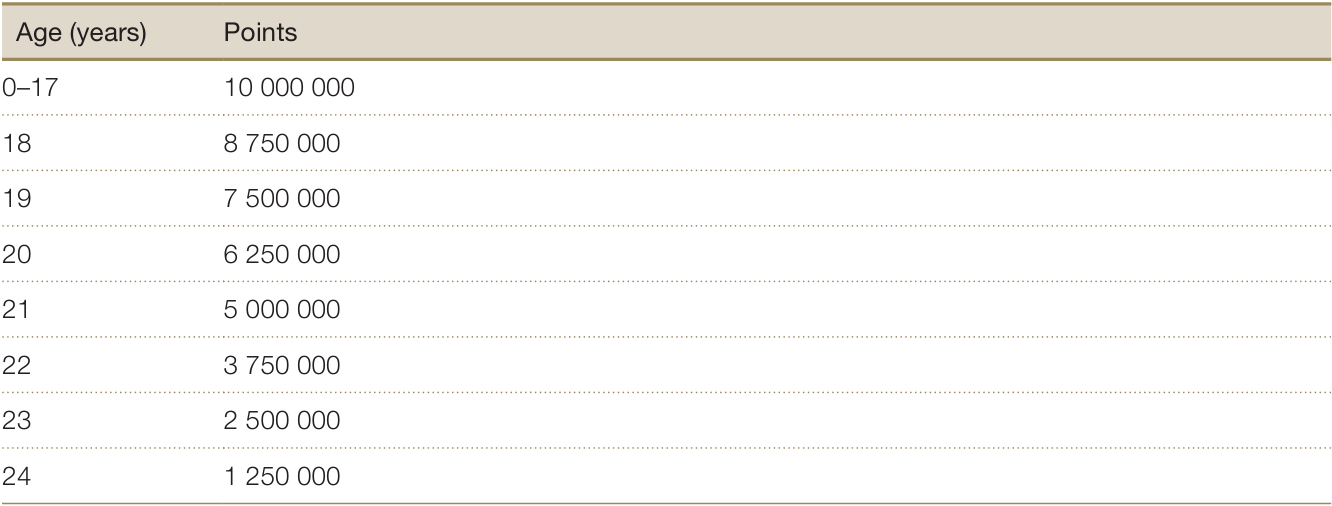
Paediatric bonus of 100 000 for restricted algorithms – state waiting. With age tapering scores as follows:
Points = 100,000 – ((100,000/ (25-17)) *(age – 17))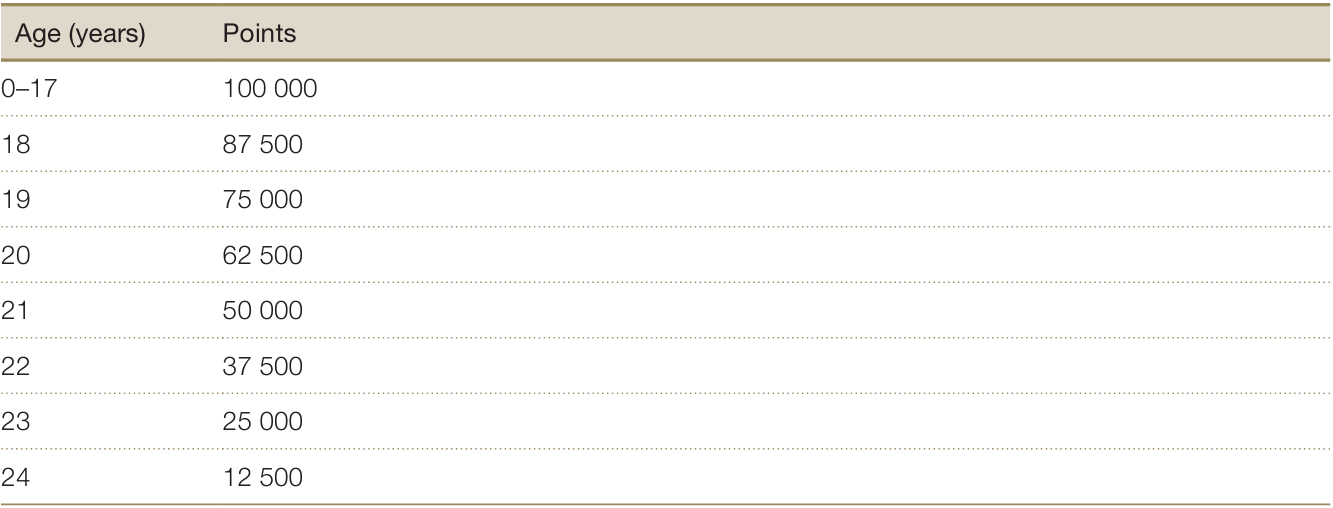
Recipient and donor are HLA DRB1 homozygous – bonus 500 000 to state HLA-matching algorithm only.
In the event that more than one patient has the same score, the ranking of the patients with identical scores is randomised.
Interstate Utilisation Algorithm
In rare situations there may not be enough patients in a given state to be able to accept the available kidneys. Most often this occurs if the donor has a rarer blood group, such as AB. If there are not enough patients to receive the kidneys locally, the interstate utilisation algorithm is run. This list incorporates patients from across the country, to ensure that the kidneys do not go to waste.
Kidneys that are offered via the interstate utilisation algorithm and eventually accepted at offer rank 20 or higher are excluded from the calculation of the centre credit balance.
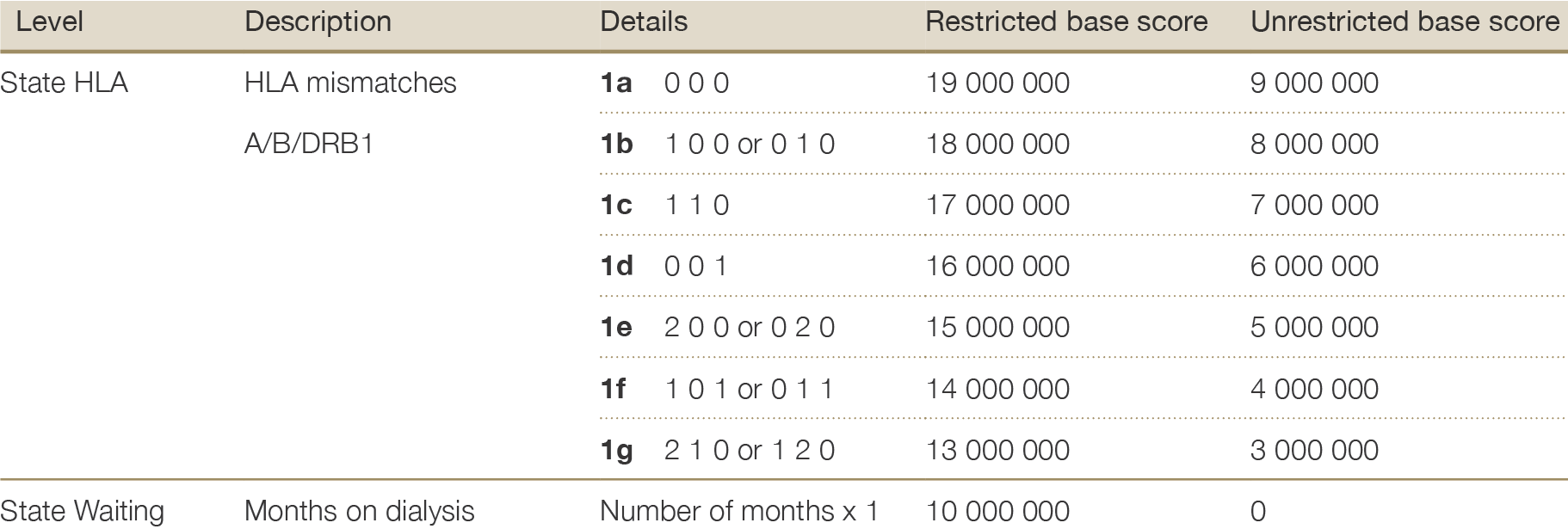
ABO selection rules
The ABO selection rules determine the acceptable organ matches, as shown:
